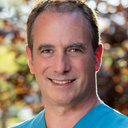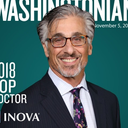Answers (11)
From board-certified doctors and trusted medical professionals
Dr. Justin Yovino, MD, FACS

Dr. Justin Yovino, MD, FACS
Board Certified Plastic Surgeon
Answer
Dr. Jeffrey J. Roth, MD, FACS

Dr. Jeffrey J. Roth, MD, FACS
Board Certified Plastic Surgeon
Answer
Dr. Vincent N. Zubowicz, MD

Dr. Vincent N. Zubowicz, MD
Board Certified Plastic Surgeon
Answer
Dr. Otto Joseph Placik, MD

Dr. Otto Joseph Placik, MD
Board Certified Plastic Surgeon
Answer
Dr. Philip S. Schoenfeld, MD, FACS

Dr. Philip S. Schoenfeld, MD, FACS
Board Certified Facial Plastic Surgeon
Answer
Dr. Tania Medina de Garcia, MD
Dr. Tania Medina de Garcia, MD
Plastic Surgeon
Answer
Dr. Connie Hiers, MD, FACS
Dr. Connie Hiers, MD, FACS
Board Certified Plastic Surgeon
Answer
Dr. Pat Pazmino, MD, FACS
Dr. Pat Pazmino, MD, FACS
Board Certified Plastic Surgeon
Answer
Dr. John P. Stratis, MD
Dr. John P. Stratis, MD
Board Certified Plastic Surgeon
Answer
More Liposculpture Questions
See all Liposculpture Q&AWE SEND PRETTY
EMAILS
What’s trending? Who’s turning heads? Which TikTok myths need busting? We’ve got you. No fluff, no gatekeeping—just real talk. Get our free, unfiltered newsletter.